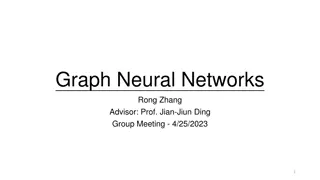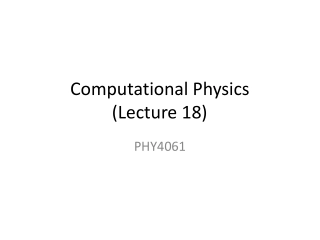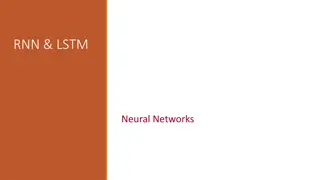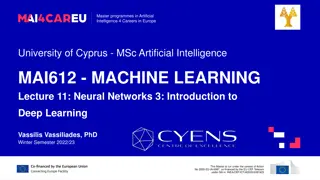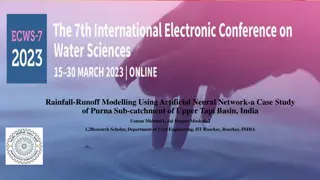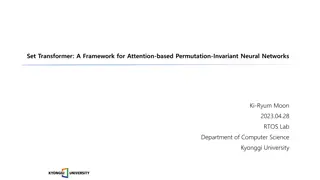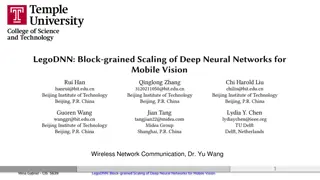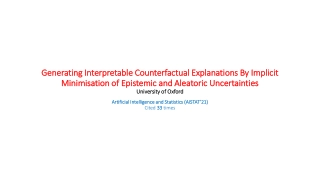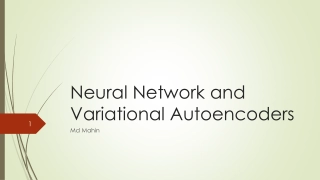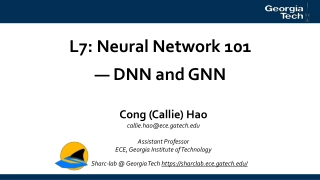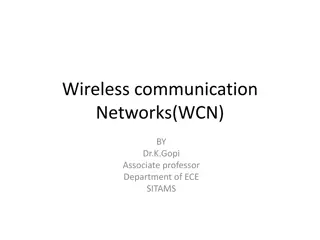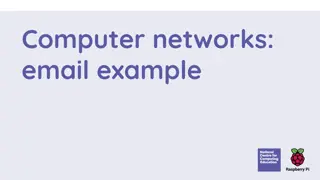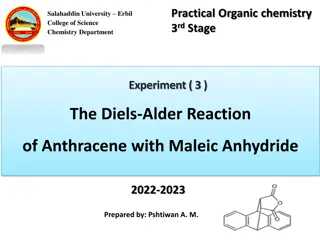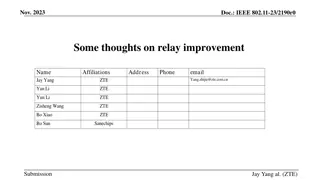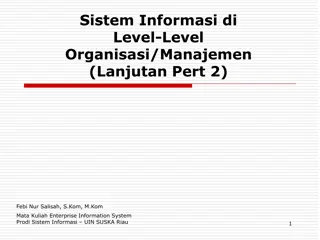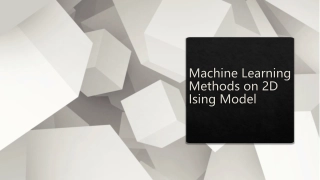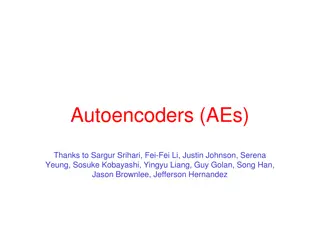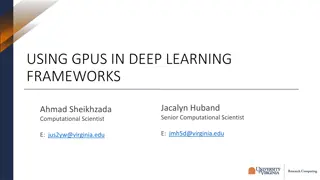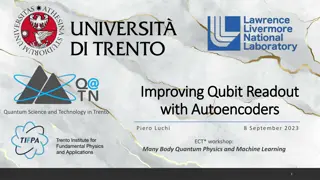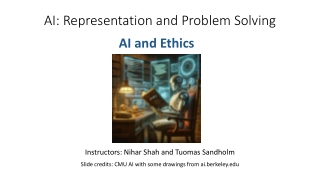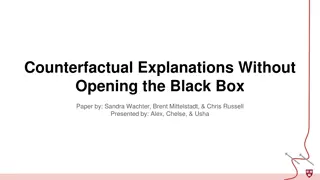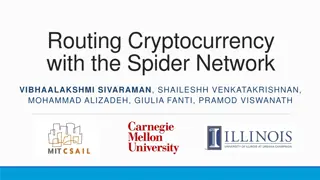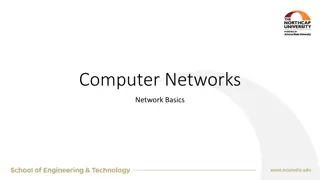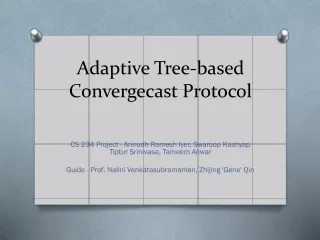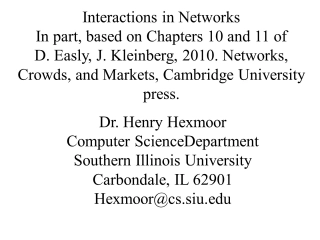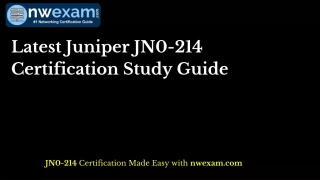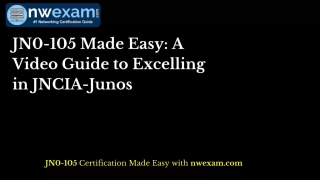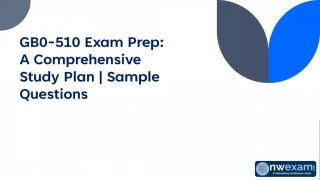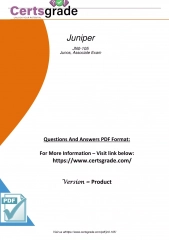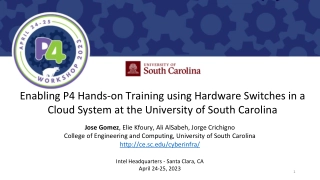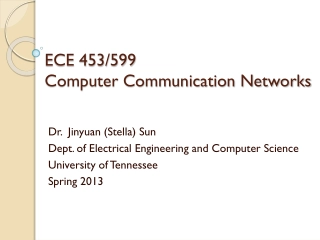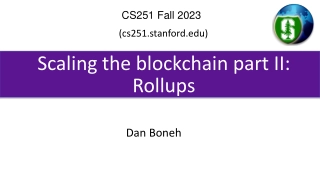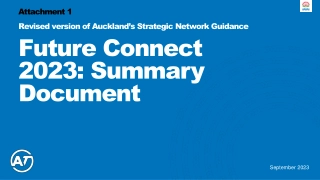Understanding Mechanistic Interpretability in Neural Networks
Delve into the realm of mechanistic interpretability in neural networks, exploring how models can learn human-comprehensible algorithms and the importance of deciphering internal features and circuits to predict and align model behavior. Discover the goal of reverse-engineering neural networks akin to decompiling a program binary to source code, supported by the hypothesis that legibility can enhance understanding and alignment in model cognition.
Uploaded on Apr 20, 2024 | 3 Views
Understanding Mechanistic Interpretability in Neural Networks
PowerPoint presentation about 'Understanding Mechanistic Interpretability in Neural Networks'. This presentation describes the topic on Delve into the realm of mechanistic interpretability in neural networks, exploring how models can learn human-comprehensible algorithms and the importance of deciphering internal features and circuits to predict and align model behavior. Discover the goal of reverse-engineering neural networks akin to decompiling a program binary to source code, supported by the hypothesis that legibility can enhance understanding and alignment in model cognition.. Download this presentation absolutely free.
Presentation Transcript
Open Problems in Mechanistic Interpretability: A Whirlwind Tour Neel Nanda https://neelnanda.io/whirlwind-slides
Motivation Key Q: What should interpretability look like in a post GPT-4 world? Large, generative language models are a big deal Models will keep scaling. What work done now will matter in the future? Emergent capabilities keep arising Many mundane problems go away A single massive foundation model
We need to study model internals Inputs and Outputs Are Not Enough
Goal: Understand Model Cognition Is it aligned, or telling us what we want to hear?
What is a Transformer? Input: Sequences of words Output: Probability distribution over the next word Residual stream: A sequence of representations One for each input word, per layer! Each layer is an incremental update - stream is a running total Represents the word plus context Attention: Moves information between words Made up of heads, each acts independently and in parallel We try to interpret heads! MLP: Processes information once it s been moved to a word Walkthrough: What is a Transformer + Implementing GPT-2 From Scratch
What is Mechanistic Interpretability? Goal: Reverse engineer neural networks Like reverse-engineering a compiled program binary to source code Hypothesis: Models learn human-comprehensible algorithms and can be understood, if we learn how to make it legible Understanding features - the variables inside the model Understanding circuits - the algorithms learned to compute features Key property: Distinguishes between cognition with identical output A deep knowledge of circuits is crucial to understand, predict and align model behaviour Interpretability Request for Proposals (Chris Olah)
A Growing Area of Research A Mathematical Framework for Transformer Circuits (Elhage et al, Anthropic 2021) Transformer Feed-Forward Layers Are Key- Value Memories (Geva et al, EMNLP 2021) Does Localization Inform Editing? (Hase et al, 2023) Toy Models of Superposition (Elhage, Anthropic 2022) Locating and Editing Factual Associations in GPT (Meng et al, NeurIPS 2022) Investigating Gender Bias in Language Models Using Causal Mediation Analysis (Vig et al, NeurIPS 2020)
A Growing Area of Research Multimodal Neurons in Artificial Neural Networks (Goh et al, Distill 2021) Compositional Explanations of Neurons (Mu and Andreas, NeurIPS 2020) Causal Abstractions of Neural Networks (Geiger et al, NeurIPS 2021) The Quantization Model of Neural Scaling (Michaud et al, 2023) SGD Learns Parities Near the Computational Limit (Barak et al, NeurIPS 2022) Curve Circuits (Cammarata et al, Distill 2020)
Personal Motivation: Why Mechanistic Interpretability? Easy to get started + get feedback loops Very fun! Vibe is a cross between maths, computer science, natural sciences and truth-seeking Code early, and code a lot - get contact with reality https://neelnanda.io/getting-started
Features = Variables: What does the model know? Multimodal Neurons (Goh et al) neuroscope.io
COP: Studying Neurons Softmax Linear Units (Elhage et al) neuroscope.io
Tool: Neuroscope https://neuroscope.io Open Problems: Studying Learned Features
Circuits = Functions: How does the model think? Induction Heads (2L Attn-Only Models) A Mathematical Framework (Elhage et al) Open Problems: Analysing Toy Language Models
Mechanistic Understanding Induction Heads Illustrated (Callum McDougall)
Case Study: Understanding Emergence of In-Context Learning Induction Heads and In-Context Learning (Olsson et al) Open Problems: Analysing Training Dynamics
The Mindset of Mechanistic Interpretability Alien neuroscience: Models are interpretable, but not in our language If we learn to think like them, mysteries dissolve Skepticism: It s extremely easy to trick yourself in interpretability Zoom In: Rigour and depth over breadth and scalability Ambition: It is possible to achieve deep and rigorous understanding A bet that models have underlying principles and structures that generalise
Case Study: Grokking Mechanistic Understanding can dissolve mysteries in deep learning Grokking: Generalization Beyond Overfitting (Power et al)
The Modular Addition Circuit Progress Measures for Grokking via Mechanistic Interpretability (Nanda et al) Open Problems: Interpreting Algorithmic Models
Progress Measures for Grokking via Mechanistic Interpretability (Nanda et al)
Frontier: Polysemanticity and Superposition Multimodal Neurons (Goh et al) Open Problems: Exploring Polysemanticity & Superposition
Hypothesis: Polysemanticity is because of Superposition Toy Models of Superposition (Elhage et al) Open Problems: Exploring Polysemanticity & Superposition + Analysing Toy Language Models
Conceptual Frameworks: Geometry of Superposition Toy Models of Superposition (Elhage et al) Open Problems: Exploring Polysemanticity & Superposition + Analysing Toy Language Models
Case Study: Interpretability in the Wild Seeing what s out there When John and Mary went to the store, John gave the bag to -> Mary Interpretability in the Wild (Wang et al) Open Problems: Finding circuits in the wild
Refining Ablations: Backup Name Movers Mechanistic Interpretability as a validation set Backup Head Negative Backup Head Open Problems: Techniques, Tooling and Automation
Technique: Activation Patching Practice finding circuits => develop good techniques Locating and Editing Factual Associations in GPT (Meng et al) Open Problems: Techniques, Tooling and Automation
Demo: Exploratory Analysis Demo https://neelnanda.io/exploratory-analysis-demo
Linear Representation Hypothesis: Models represent features as directions in space Models have underlying principles with predictive power
Case Study: Emergent World Representations in Othello-GPT Networks have real underlying principles with predictive power Seemingly Non-Linear Representations?! Emergent World Representations (Li et al)
My colour vs theirs Linear representation hypothesis Generalises Survived falsification Has predictive power Actually, Othello-GPT Has A Linear Emergent Representation (Neel Nanda) Open Problems: Future Work on Othello-GPT
Learning More 200 Concrete Open Problems in Mechanistic Interpretability https://neelnanda.io/concrete-open-problems Getting Started in Mechanistic Interpretability https://neelnanda.io/getting-started A Comprehensive Mechanistic Interpretability Explainer https://neelnanda.io/glossary TransformerLens https://github.com/neelnanda-io/TransformerLens


